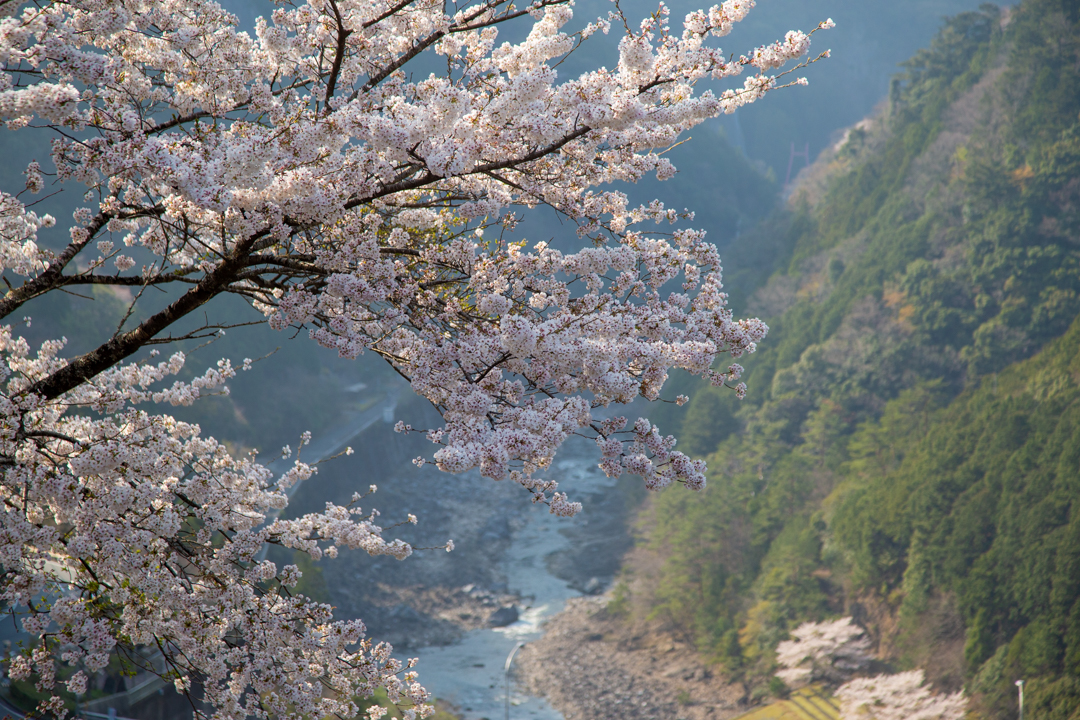みやのたいら・Miyanotaira

This hamlet was one of those most profoundly affected by the construction of the Otaki Dam. Nearly all of the residents of this hamlet were forced to relocate aboveground or out of the village when the river was flooded. Kawakami’s most important shrine, Niukawakami Shrine 丹生川上神社, also had to be relocated above the new water level.
In addition to Kawakami’s similarity with Egypt in referring to land upstream as “upper” and that downstream as “lower,” another similarity with Egypt is this shrine relocation. In 1968 the ancient Egyptian temples of Abu Simbel were relocated entirely due to the construction of the Aswan High Dam. The old original site was submerged with the creation of Lake Nassar, as was the former site of the Niukawakami Shrine with the creation of the Otaki Dam.

A prayer niche is located at the South-East corner of the new shrine, pointing in the direction to the site of the submerged shrine site so that locals can offer prayer.
This shrine has many centuries of history and it is unknown exactly when pilgrimages here began, but it is believed that spiritual traditions began here well before any Shinto shrine or even the concept of Shinto was constructed. When the original shrine was excavated during Otaki Dam construction, remains of an alter dating back to the 11th century were unearthed, as well as standing stones that are believed to date back to the the end of the middle Jomon era (about 4,000 BCE). The discovery of these stones reshaped the identity of Kawakami and the timeframe of our understanding of how many centuries humans have inhabited these mountains. Stones excavated from this dig are held within the shrine and can be viewed by the general public.
Referred to as the “upper shrine”, Niukawakami Shrine is a part of a trifecta with two other shrines of the same name, one in Higashiyoshino (the middle shrine) and one in Shimoichi (the lower shrine). Like many Shinto shrines in Japan, these shines were associated with rain and crop harvest in modern history. Rain was believed to be controlled by dragons spirits, which are gods associated with water in Japan.

There are images of a black horse and a white horse at this shrine. The black horse is prayed to in times or drought and the white horse is prayed to in order to stop the rain. Today, festivals and purification rituals are held at this shrine throughout the year.

Below this shrine is the residential Miyanotaira area and the Yamabuki public hall constructed here after the dam was completed. This hall is in great condition and is the main staging ground for large indoor events in the village. The hall is named after the local Yamabuki flower, which the local Yamabuki Bus providing public transportation to villagers is also named after. The Kawakami local library and board of education are also located within this building. Kawakami’s nursery daycare is located across the street.


Located immediatly next door is the 森と水の源流館 (“Genryukan” for short). This is your go-to for organizing hiking tours and learning more about the ecology of Kawakami. There is a newly-renovated museum exhibit within this building that is worth visiting. The staff are very knowledgable and can help you with any nature-related inquiries or explorations that you’d like to conduct.
